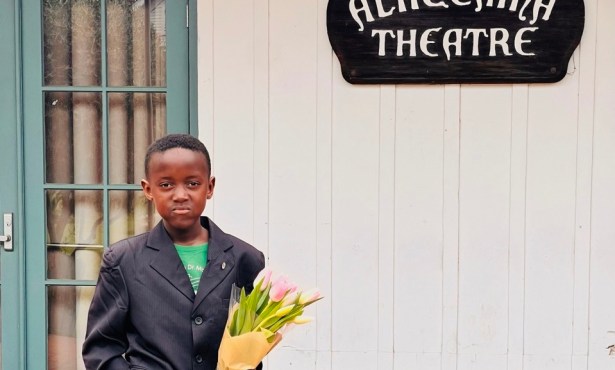CND2: The Elite Training Team for Spain’s Compa±-a Nacional de Danza
Young and Restless
France has the Paris Opera Ballet, and Russia has the Mariinsky Ballet Company, which was formerly the Kirov. America has New York City Ballet and American Ballet Theatre, and Holland has the renowned Netherlands Dance Theatre (NDT). But until the late 20th century, Spain had no national ballet company. Although classical ballet was studied in Spain, it was an imported art form-and far less popular than the flamenco, or the sevillanas, the fandango, and the paso doble. The Ballet Nacional de Espa±a gave the country a company dedicated to performing traditional Spanish dances in 1978, but it wasn’t until 1990, when Nacho Duato founded Compa±-a Nacional de Danza (CND), that contemporary ballet and modern dance technique and choreography from an international perspective got its chance to shine in Spain. Modeling CND after the NDT, which runs a pre-professional company of younger dancers, in 1999, Duato founded a junior company of his own, CND2. The group first performed in the U.S. at the Jacob’s Pillow dance festival in 2003 to critical acclaim and is now coming to Santa Barbara for the first time on Tuesday, May 15. In advance of its S.B. performance, I spoke to CND2 Co-Artistic Director Tony Fabre about the show’s program, and why young dancers are fun to work with.

CND2 was created as a training company for CND. Does it have any other purposes? [Nacho] Duato had two main goals: the first was to train young dancers to know his style so he could recruit them for the main company, and the other was to give young dancers professional experience. The main company tours to bigger stages in places like China, Japan, Paris, and New York, and CND2 tours more within Spain and on smaller stages internationally. CND2 is 14 dancers: seven girls and seven boys, ages 18 to 21.
Is the repertory for the junior company exclusively Nacho Duato’s work? Not always. We’re trying to give opportunities to young choreographers also. So if we see someone or something interesting, we sometimes do that, too. It’s important for the members of the young company to get different opportunities and styles, so in case they do not get to dance with CND, they can decide where else they want to go-they are well-rounded. We usually do two new creations a year: one from Nacho, and one from a guest choreographer. Right now I’m trying to get Nacho to create a piece on CND2 for next season, because it’s very good for them to get to work with him directly like that instead of learning his choreography that was created on the main company or another company.
Can you tell me a little about each piece in the Santa Barbara program: Remansos, Jardi Tancat, and Coming Together? I’d say they’re all very different, though they’re made by the same choreographer. All three are very musical, and all need a lot of control and technique. Remansos was created for the American Ballet Theatre as a trio for three men. For CND, Nacho added three women. So the version we’re doing in Santa Barbara is for six dancers. Including this piece in the CND2 rep is great because it’s a really big challenge-one of the most classical pieces we do. It’s an abstract piece, and working on it made the junior company go to another level. They improved a lot.
Jardi Tancat I like especially because it’s the first choreography ever from Nacho. It was made in the early ’80s, and it’s really the essence of his work. It’s in the minor key, and it’s about people working in the fields in the countryside. It’s set to beautiful Spanish songs, and it has six dancers-three couples. It’s more folkloric, and I think it’s the most intricate of his work. CND2 will be premiering this piece on this tour-they have never performed it before.
Coming Together is a piece Nacho made for CND. It’s a crazy dance-very fast, very loud-17 minutes of pure, pure energy. It’s great for the freshness of the young members of the company, and they love to dance it. It’s really contagious, and audiences love it.
A lot of choreographers these days prefer to work with more mature dancers. What are the benefits of working with such young performers? They are so eager to learn. It’s wonderful to work with people who are like sponges. They take in everything you tell them and try to digest it and make something with it. They don’t have an attitude problem that some professionals have. They’re very enthusiastic, very motivated, and I would say that what they give onstage is amazing-raw, young, fresh energy-it’s what I like and what makes me want to keep working with young dancers.
4•1•1
Campbell Hall on Tuesday, May 15 at 8 p.m. For tickets, call 893-3535 or visit www.artsandlectures.ucsb.edu.



